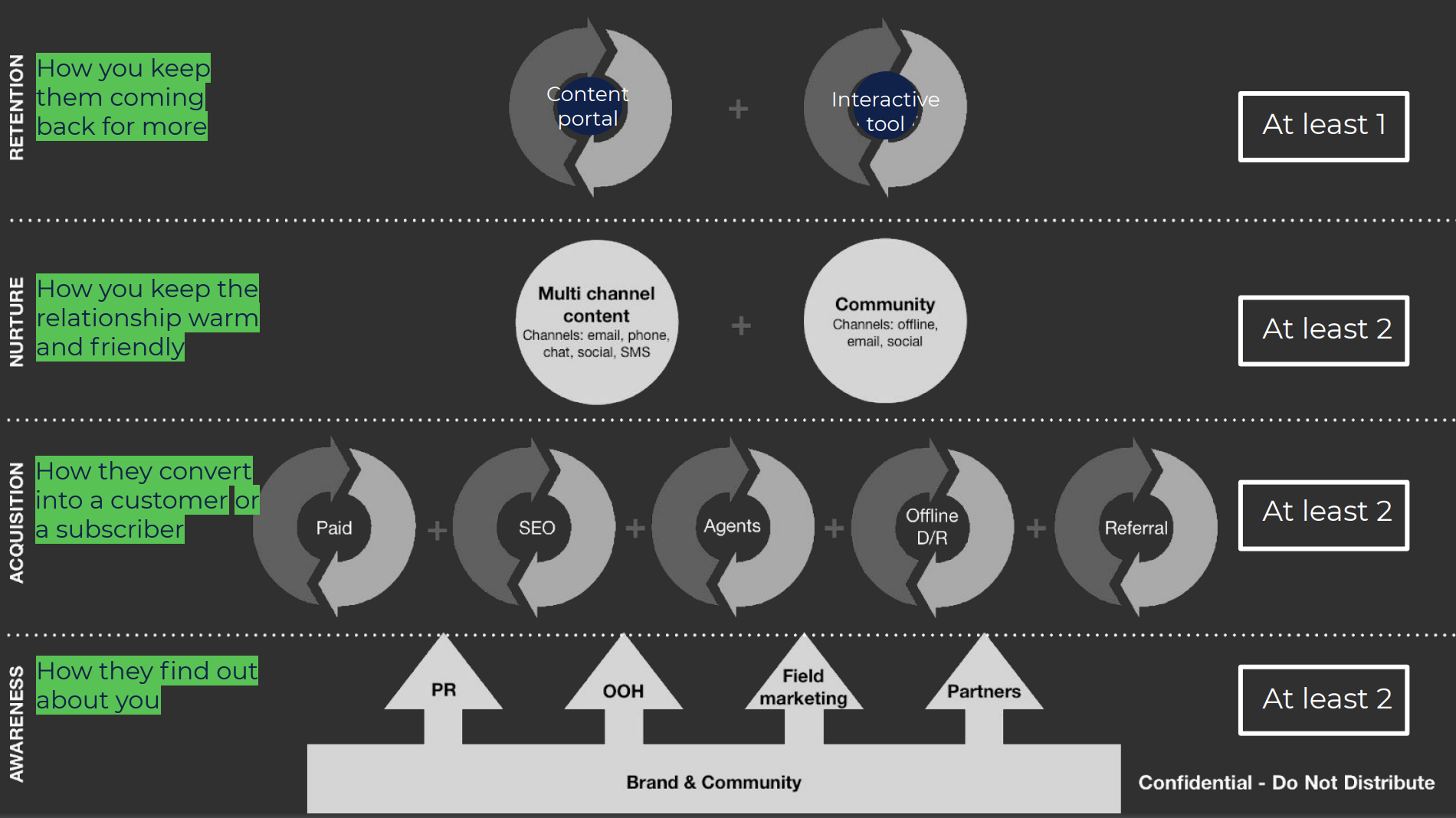Your startup might rely on clever growth tactics to get off the ground, but you need more than spreadsheets if you want to turn viral spikes into a real business. You need a qualitative growth model to guide the strategy that you can use to tell your story to your team and investors.
Growth marketing expert Susan Su sat down with us at TechCrunch Early Stage: Marketing and Fundraising this month to share pointers for young companies that are trying to raise money after initial market traction. In the presentation below, she maps out a growth strategy from seed through Series A and B rounds and details how your milestones, budgets, investor updates and other measures change as you advance.
The not-so-secret secret here is that the key to great retention is really simple. It is building a product that solves a real and especially persistent problem for people.
Throughout the process, “a qualitative model tells the story of growth that you can use at early stages and really all throughout your company life cycle,” she explains. “A quantitative model or quantitative growth accounting charts the numerical course for how you actually deliver against that narrative and becomes more relevant at later stages when you actually have real numbers.
Formerly a strategic growth adviser to companies at Sound Ventures, a growth marketing lead focused on startups at Stripe, and the first hire and head of growth at Reforge, Su just became a partner investing in climate tech for early-stage fund Toba Capital. She also writes a popular newsletter on climate investing and runs a six-week course for other investors on the topic.
Here’s more about growth, and how to talk about it with investors, from her presentation:
So here’s a sample qualitative growth model that I built for one of our portfolio companies with some modifications for anonymity. At the bottom, we have our linear inputs that form the foundation of awareness — in other words, traffic or leads that feed into our growth machine.
Once those leads come in, we have our acquisition loops, working to turn that non-repeatable spiky linear traffic (aka TechCrunch traffic, if you get so lucky as to be written up in TechCrunch) into scalable, repeatable acquisition. You cannot repeat the TechCrunch effect.
For this sample business, I happened to spec out five different acquisition loops — I was really ambitious. Many companies will struggle to identify this many. But the key to being able to scale is to have multiple viable acquisition loops, not just one single thing that works.
On top of that, we lay our engagement and retention mechanisms, the not-so-secret secret here being that the key to great retention is really simple. It is building a product that solves a real and especially persistent problem for people.
This qualitative growth model is your rough map of the terrain that tells you and, very importantly, your investors and other stakeholders in your company where you’re planning to go. And it’s critical even at the earliest stages, just to have some idea of how you’ll build scalable, repeatable growth into your company operations.
You’ll notice that on the side of this diagram here, I have these kind of recommendation boxes — at least two, at least three, etc. These aren’t hard and fast rules, but it’s more of a guideline to say that you want to aim to have multiple things work. At each layer of your growth model, you don’t want to just be relying on ads or just be relying on SEO, or just be relying on email marketing for your engagement and retention, you really want to have your eggs in multiple baskets. (Timestamp: 07:22)

Image Credits: Susan Su (opens in a new window)
She goes on to discuss how the qualitative model becomes more and more quantitative as you get to later stages. Here’s where you want to be for your Series A raise:
What matters most here is demonstrated user love that you can point to and prove. And some hints at potential for massively scaling growth. You are currently at the point where you’ve identified multiple viable channels that offer the ability to scale. And by that, I mean those channels are fairly open. The channels themselves have pretty high volume on them, or they’re at scale themselves. And you can reasonably compete on them.
You’ve either hired or you already have in place some type of strong acting head of growth. And you set some initial growth milestones, by which I mean X users or customers by Y timeline. Time is always a really important component to the milestones. And maybe you’ve even met some of them, even if you’re not sure how you met them, or how to repeat that.
Now, where you’re headed is you’re starting to operationalize early wins into a repeatable place. You’re building predictability into whatever marketing-to-sales funnel is relevant to your business. Your growth person or team are dedicating half their time to developing new channels that show promise or channels that you’ve kind of figured out that show promise and the other half of their time to exploration, total new exploration.
Investor-facing, you want to highlight progress on your North Star metric, any other rollup KPIs that you’ve met or identified, and any really strong quantitative signals of customer love, as demonstrated primarily by engagement, behavior, retention behavior that most importantly persists and scales across new cohorts of customers. (Timestamp: 10:26)

Image Credits: Susan Su
Regardless of these stages, though, you always need a growth team. Here’s how she explains it later on.
The question is more around what constitutes that team at what time at the earliest stages. It is a founder who has learned the ropes enough to design and run experiments, and to have an opinion on what kind of head of growth would be a best fit for the product and company. I firmly believe that every founder should try their hand at growth, if only so that you know how to hire the right person for the role. As the company scales, it’s a leader who’s run growth and hiring a team before, supported by that team of specialists we’ve mentioned, who can then go and become the absolute best in their specific field. On behalf of your company. And at the most mature stages, growth really becomes about skillfully managing people people and expectations and reverse-engineering revenue goals into building blocks that any high-velocity team can arrange and rearrange as the channel landscape continues to shift. (Timestamp: 19:12)
One final note before we hit the video: TechCrunch is asking founders who have worked with great growth marketers to share a recommendation in this survey. We’ll use your answers to find more experts like Su to interview.
You can also read through the full transcript here.
More from Early Stage:
